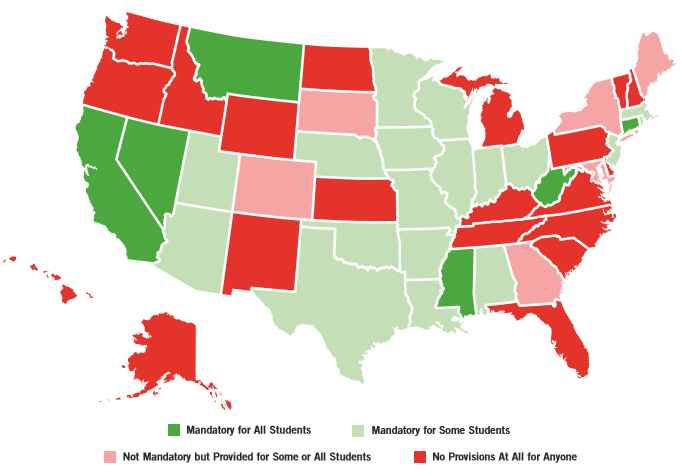
Florida is known as a land of school choice, and rightfully so. It is home to multiple large private school choice programs and a vibrant charter school sector. Its largest district proudly celebrates the fact that almost three-quarters of its students attend a school of choice.
Criticizing Florida on school choice policy feels a bit like calling out a typo in Shakespeare or complaining about a walk during a game where a pitcher throws a no hitter. I don’t want to nitpick here.
That said, Florida is a great example of the second generation of policy questions that the expansion of school choice asks. During the first generation of school choice advocacy and school choice policy, proponents were working to start programs and clear just a little space in the state’s schooling landscape to try something new and different. They met with great success, that should be celebrated.
But just like winning the lottery causes you to have a bigger tax bill, expanding school choice creates a new set of challenges that supporters need to tackle. A vibrant school choice system needs a supporting infrastructure. And perhaps there is no more important piece of the infrastructure puzzle than transportation.
Put yourself in the shoes of a parent who was just awarded a tax credit scholarship, or who just won a charter lottery to the school they have been hoping to send their child to for years. Think of the elation, the feeling that this is their lucky day. Their ship has finally come in.
But then imagine that family realizing that transportation is not part of the deal. Their child can attend the school, if they can get her there. But they can’t. How heartbreaking. It would be like running a marathon but twisting your ankle on the last mile.
This is the case for far too many families across the country. While I don’t live in Florida, I have to imagine it is the case for some Florida families as well. What’s more, this scenario doesn’t contemplate the families who don’t even bother applying for a scholarship or a slot in a charter school because they know that they cannot make transportation work.
These experiences were what motivated the new research paper I wrote with my colleague Michael Shaw, called Transporting School Choice Students. In it, we survey state pupil transportation statutes to see what requirements are placed on schools to provide transportation to students choosing a school outside of their geographically-assigned school, whether by inter-district enrollment, charter schooling, or going to private school.
What we found was an incongruous briar patch of mandates and flexibility that varied among and even within states. Some states support some forms of choice and not others. Some allow flexibility in funding but don’t put requirements on it. Still others support some classes of students (like students in schools that have been identified as failing or students with special needs) but not others. Some support choice across the board, and others don’t support choice transportation at all.
Looking at Florida law, we identified that with respect to inter-district transfers, Florida does not require districts to provide transportation. For charter school students, mandatory funding exists for students, but through contiguous districts only, and for private school students, districts and private schools have the flexibility to work out arrangements for pupil transportation, but there are no requirements. In each of these cases, we see limitations on the ability of students to access schools of choice based on the transportation options available.
At the same time, Florida is one of the only states to provide transportation funding in their private school choice programs. The Florida Tax Credit Scholarship program and the Family Empowerment Scholarship program allow participating students to apply their scholarship funds to necessary transportation costs (amongst other allowable uses). Also, students can get a $750 tax credit scholarship specifically to support transportation to another public school district, if they so choose.
Allowing scholarship dollars to be used for transportation is a no-brainer, and every private school choice program in America should create it as an allowable use. That said, too many scholarships are funded at low levels that already stretch school budgets. Further dividing that money will only make the problem worse. Creating specific additional funding streams to cover transportation is a better solution. It is more expensive, but will make the prospect of choice more real for more families.
Even Michael Jordan had to practice every day if he wanted to get better. Florida is no different. It might be the Michael Jordan of school choice, but it can always do more to help more students. Solving the transportation puzzle is one way to do that.


